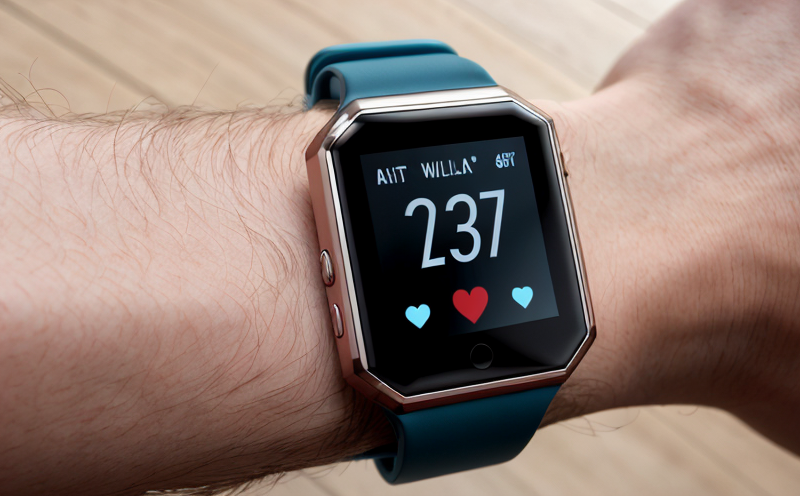IEC 60529 IP Rating Dust and Water Ingress Testing for Wearables
The International Electrotechnical Commission (IEC) Standard 60529, commonly known as the IP rating system, provides a standardized method to describe the level of protection that an electrical enclosure offers against intrusion by foreign objects such as dust and water. In the context of wearables, this standard ensures that devices can withstand environmental conditions without compromising their functionality or integrity.
Our service specializes in testing the IP ratings for wearable devices according to IEC 60529 standards. This includes simulating real-world scenarios where the device may come into contact with dust and water. The process involves a series of tests designed to assess the durability and robustness of the device under various environmental pressures.
Detailed testing protocols are critical for ensuring that wearables meet regulatory requirements and industry standards. By adhering strictly to IEC 60529, we provide comprehensive testing solutions tailored specifically to the needs of wearable manufacturers. Our service covers a wide range of IP ratings (e.g., IPX1 to IPX8), ensuring compliance with international standards.
The importance of this testing cannot be overstated. With the increasing popularity of wearables in healthcare, fitness tracking, and consumer electronics markets, it is essential that these devices are reliable under diverse environmental conditions. Our team of experts ensures that every aspect of the device’s design is thoroughly evaluated to prevent potential failures due to dust or water ingress.
In addition to ensuring compliance with regulatory requirements, our service also helps manufacturers identify areas for improvement in their product designs. By understanding how different IP ratings affect performance and longevity, companies can make informed decisions about material selection, construction techniques, and overall build quality.
Our commitment to accuracy and precision extends beyond just the testing process itself; we provide detailed reports that outline all aspects of the test results. These reports serve as valuable tools for both internal teams responsible for quality control and external stakeholders like regulatory bodies or potential investors.
Applied Standards
| Standard | Description |
|---|---|
| IEC 60529:2013 | This standard defines the protection ratings for electrical enclosures against solid objects and liquids. It is widely used to ensure that electronic devices are capable of operating safely under specified environmental conditions. |
Customer Impact and Satisfaction
By partnering with us for IEC 60529 IP rating dust and water ingress testing, customers can expect a number of benefits that contribute directly to their success in the market:
- Enhanced Product Reliability: Through rigorous testing, potential weaknesses are identified early on, allowing manufacturers to address these issues before product launch.
- Compliance Assurance: Ensuring compliance with international standards helps mitigate risks associated with non-compliance penalties and enhances brand reputation.
- Informed Decision-Making: Detailed test reports provide insights into various aspects of the device's performance, guiding future product development efforts.
- Cost Efficiency: Early identification of issues saves costs by avoiding costly rework or recalls later in the production cycle.
Competitive Advantage and Market Impact
In today’s competitive market, having reliable and robust wearable devices is crucial for maintaining customer trust and loyalty. Our service enables manufacturers to differentiate their products through superior quality assurance practices:
- Increased Customer Trust: Products that meet stringent environmental protection standards are perceived as more trustworthy by consumers.
- Premium Brand Image: Achieving and demonstrating compliance with international standards such as IEC 60529 can significantly enhance a company’s reputation among industry peers.
- Better Market Positioning: Meeting regulatory requirements early on allows companies to bring products to market sooner, capturing first-mover advantages in competitive markets.





